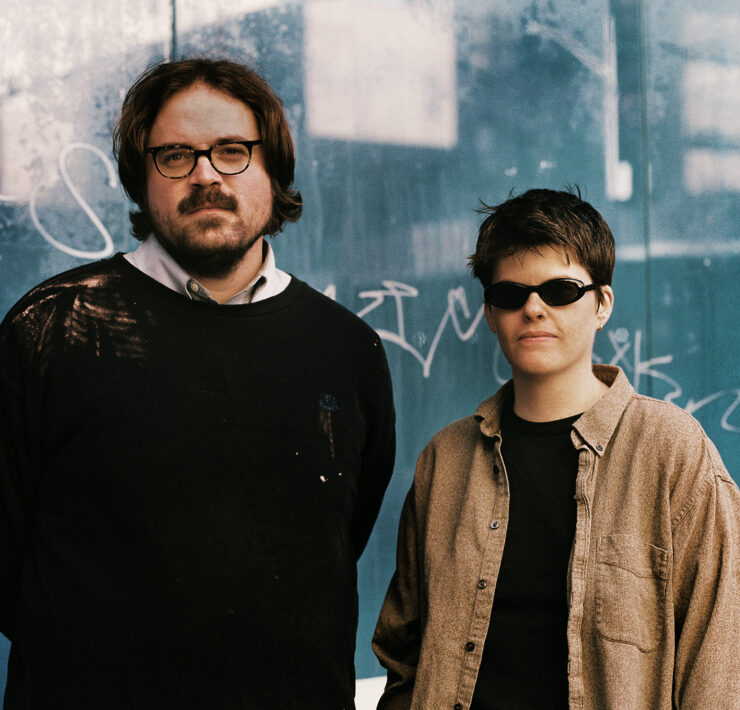Take off your Kinsey blinders

Lauren is a marketing and social media coordinator for a…
With every new year comes the hope of a new beginning, or at least the hope for a new way of looking at things. So now that we’re officially in 2013, I started thinking about all of the possibilities that would come about. Surely, we as a society have matured with every new year, right? Maybe we have a new way of looking at wars and love and sex through a different lens. After all, we as a culture have shifted views in the past few decades, right?
Still pondering this, I went out to dinner with some old friends the other night. Sipping on my game-day special tall Blue Moon seasonal beer, I was trying to balance my attention between the football game on the big screen and my friends conversing, I managed to catch the sentence “I’d say I’m a five.”
Assuming that my friend was absent-mindedly or half-heartedly rating his attractiveness, I was rather shocked to hear him reference the Kinsey Scale and the placement he would give himself.
Nearly spitting out my Winter Abbey Ale, I gathered my thoughts and tried to remember everything I could about the Kinsey Scale. I knew it had been invented nearly 60 years ago by sexologist and biology professor Alfred Kinsey, but I’ve always thought that it was rather archaic.
Sure, in the 1940s and 1950s it may have been plausible that people could rate themselves on a scale from 1-6, of purely heterosexual (as a “1”) or purely homosexual (as a “6”), or some number in between – but this is 2013.
I have always thought that in the past 60 years, both sex and sexuality have changed drastically. The social acceptance of the LGBT culture and movement has come miles in recent years, from civil unions to trans inclusiveness. So why is it that when it comes to dealing with our own sexuality, we have stopped evolving?
The Kinsey Scale was once seen as enlightening because Kinsey’s research found both higher-than-expected rates of same-sex attraction and created a way of measuring varying degrees of bisexual orientations that are neither “homosexual” nor “heterosexual.” But where on the scale would you fit if your partner is transgender? Or if you are trans, intersex or gender-queer, in which case it’s harder to discern whether your attraction to someone is a same-sex attraction or an opposite-sex attraction. As one Trans writer said: “this scale can be a little tricky when applying it to trans people… [and] leaves some of us completely out of the picture.”
The scale could also break down if you’re attracted to different genders in different ways – perhaps more often romantically drawn to men, but really turned-on by women, or vice versa. Or if you’re attracted by other qualities in a person – an attitude, intelligence or style – regardless of the subject’s gender. There are many who have a hard time placing themselves on a two-dimensional scale.
And it may be that the scale itself creates an understanding of sexuality that makes us less aware, understanding or accepting of sexualities and gender identities that don’t have a spot on the Kinsey Scale map.
Over the years, with every New Year’s resolution we make, we usually decide to take on new things, thereby advancing our lives and often bettering them. But while we were buying Paleo cookbooks and signing up for cross-fit and meditation classes at the closest YMCA, our health and attitudes have progressed, perhaps leaving our sexualities frozen in time. So the question remains: have we really changed the way we perceive and treat our sexuality? Or are we still looking at it through the Kinsey lens?
My friend who placed himself on the number five marker gave me a simple response to this question: “It [the Kinsey Scale] is making its reemergence.”
Maybe the infamous sex doctor did something right. While it seems absolutely preposterous that my sexual preference can be measured with a number that is neither here nor there, the scale’s creator sparked a generational shift. In fact, many people refer to the man as the “father of the sexual revolution.” Sexual topics in both the heterosexual and homosexual populations were brought to the forefront so much that the Kinsey Institute was founded at Indiana University.
It may be possible that even more than 60 years since its creation, the Kinsey Scale still profoundly affects our sexuality and the way we think about sexuality. In fact, the scientists and researchers at the Kinsey Institute recently created a Kinsey app that reports on the sexual behavior of people. Now available on your iPhone or any other smart phone device, you can measure not only your own sexuality, but you can also rate the sexuality of others with the scientific data.
“People are natural observers,” said Kinsey Institute director Julia Heiman in an interview with The Advocate. “We expect to gain new insights into sexuality and relationships today.”
With the invention and use of this app alone, the assumption is furthered that Alfred Kinsey still has our sexuality by the balls – quite literally.
There are, however, people in the in and outside of the LGBT community that reject this notion, arguing that the Kinsey Scale is an outdated tool that has no place or precedence in today’s society or this day in age.
“I like to think that we live in a society where hetero-normative concepts apply,” said Reagan McCauley, a 21-year-old student at the University of Georgia whose emphasis is queer literature. “People are so into talking about sexuality, even though the Kinsey report came out in the ’40s. It was a completely different time, and sexuality was first beginning to be explored. We should stop referring to it when describing our sexuality 60 years later.”
We, as humans, have a natural ability to be influenced by a multitude of things, especially things that have a great significance on society as a whole. Our diets are influenced by the Jenny Craig commercials we see on television between the end of Dance Moms and the start of The Voice; our desire to be tied up by a silk tie may have been influenced by reading Fifty Shades of Grey along with the rest of the world over the summer. So it makes sense that our sexuality and the way we treat it is influenced by a social movement and sexual resource created back in the late 1940s.
However, as humans, we should be naturally evolving. Alfred Kinsey took the world by surprise back in 1948. It’s 2013 now, and our sexuality is something that we can openly talk about without assigning ourselves a number. The time has come to take off the Kinsey blinders and exploring our sexuality in a new and more millennium-appropriate manner.
What's Your Reaction?
Lauren is a marketing and social media coordinator for a Denver nonprofit. In her spare time she enjoys writing feature articles for Out Front, as well as blogging about breaking news and local and national LGBT happenings.









